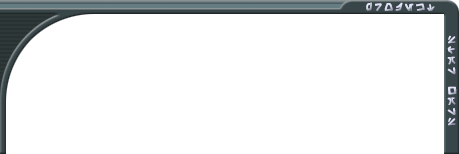Und hier haben wir den Insider-Artikel:
The Seven Forms of Lightsaber Combat
By David West Reynolds
Since the dawn of Jedi history, seven fighting disciplines have arisen, known as the Seven Forms. The Forms represent differing styles and philosophies of combat. Each Form has its respective merits, and as seen in Attack of the Clones, all of them are still in use.
Form I
Millennia before the Clone Wars, advanced technology replaced metal swords with energy-beam lightsabers. In this transition the first Form was born. Jedi Masters created Form I from ancient sword-fighting traditions, since the principles of blade combat remained much the same. The basics of attack, parry, body target zones, and the practice drills called velocities are all here.
Young Jedi still begin their training by learning Form I.
Form II
The ultimate refinement of lightsaber-to-lightsaber combat became Form II, advancing the precision of blade manipulation to its finest possible degree and producing the greatest dueling masters the galaxy has ever seen.
Today Form II is an archaism studied by almost no one in the Jedi Order, because it is not relevant to current tactical situations, in which Jedi enemies rarely fight with lightsabers. Even with the resurgence of the Sith, confrontation of an enemy with a lightsaber is an exceedingly rare prospect for a Jedi, so they continue to focus on more practical Forms. Sith expecting to battle lightsaber-wielding Jedi, however, find Form II a powerful technique.
Form II is the chosen discipline of the machiavellian Separatist Count Dooku, who wields it to devastating effect. His utterly precise moves overwhelm Jedi who are not accustomed to the special requirements of lightsaber dueling. With Form II, Dooku holds his own even against Master Yoda.
Acknowledged practitioners: Count Dooku, Exar Kun
Form III
The third great lightsaber discipline was first developed in response to the advancement of blaster technology in the galaxy. As these weapons spread widely into the hands of evil-doers, Jedi had to develop unique means of defending themselves. Form III thus arose from "laserblast" deflection training. Over the centuries it has transcended this origin to become a highly refined expression of non-aggressive Jedi philosophy. Form III maximizes defensive protection in a style characterized by tight, efficient movements that expose minimal target area compared to the relatively open style of some of the other Forms.
Obi-Wan Kenobi takes up a dedication to Form III after the death of Qui-Gon Jinn (who favored Form IV), since it was apparent to Kenobi that Jinn's defense was insufficient against the Sith techniques of Darth Maul. True Form III masters are considered invincible. Even in his elder years, Kenobi remains a formidable Form III practitioner.
Even the extraordinarily deadly Jango Fett is unable to penetrate Obi-Wan Kenobi's superb lightsaber defenses.
Acknowledged practitioners: Obi-Wan Kenobi
Form IV
Form IV is the most acrobatic Form, heavily emphasizing Jedi abilities to run, jump, and spin in phenomenal ways by using the Force. Masters of Form IV incorporate all of the ways in which the Force helps them go beyond what is physically possible. Their lightsaber combat is astonishing to watch, filled with elaborate moves in the center of which a Jedi may be all but a blur. Yoda, with his deep emphasis on the Force in all things, is a Form IV master. Form IV was also the chosen discipline of Qui-Gon Jinn and the early choice of his apprentice Obi-Wan Kenobi.
Ordinarily Yoda walks with a slight limp, his ancient body wracked with arthritis and the normal infirmities of old age. In combat however, the diminutive Jedi Master presents extraordinary strength and reflexes - entirely the result of focusing the Force through his physical body and not just his spirit as is his usual emphasis.
Acknowledged practitioners: Yoda, Qui-Gon Jinn
Form V
During an era when Jedi were called upon to more actively maintain the peace in the galaxy, Form V arose alongside Form IV to address a need for greater power among the Jedi. Jedi Masters who felt that Form III could be too passive developed Form V. A Form III master might be undefeatable, but neither could he necessarily overcome his enemy. Form V focuses on strength and lightsaber attack moves. This Form exploits the ability of the lightsaber to block a blaster bolt and turns this defensive move into an offensive attack by deflecting the bolt deliberately towards an opponent. A dedication to the power and strength necessary to defeat an enemy characterizes the philosophy of Form V, which some Jedi describe by the maxim "peace through superior firepower." To some Jedi Knights, Form V represents a worthy discipline prepared for any threat; to others Form V seems to foster an inappropriate focus on dominating others.
As the Clone War begins, Anakin Skywalker dedicates himself to Form V in his increasingly blind quest for strength. As Darth Vader he will still be using Form V when he confronts Obi-Wan Kenobi and later Luke Skywalker.
Acknowledged practitioners: Anakin Skywalker, Luke Skywalker
Form VI
In the time of Palpatine's Chancellorship, Form VI is the current standard in Jedi lightsaber training. This Form balances the emphases of other Forms with overall moderation, in keeping with the Jedi quest to achieve true harmony and justice without resorting to the rule of power. It is considered the "diplomat's Form" because it is less intensive in its demands than the other disciplines, allowing Jedi to spend more time developing their skills in perception, political strategy, and negotiation. In practice, Form VI is a combination of Forms I, III, IV, and V. Young Jedi spend their first few years studying Form I and then a year or two with each additional Form before completing their training. By comparison, a Form VI master will spend at least ten years studying only that Form after completing the basic Form I training. Form VI well suits the modern Jedi's role in the galaxy, in which a Knight overly trained in martial combat might be at a loss to resolve a complex political conflict between star systems. However, full masters of other Forms sometimes consider Form VI to be insufficiently demanding.
In an increasingly dangerous galaxy, the "diplomat's Form" might not be enough against serious combat dangers. All the Form VI Jedi Knights who fight on Geonosis die in the arena battle.
Acknowledged practitioners: numerous Jedi, including those lost on Geonosis
Form VII
Only high-level masters of multiple Forms can achieve and control the ultimate descipline known as Form VII. This is the most difficult and demanding of all Forms, but it can eventually lead to fantastic power and skill. Form VII employs bold, direct movements, more open and kinetic than Form V but not so elaborate in appearance as Form IV. In addition to very advanced Force-assisted jumps and movements, Form VII tactics overwhelm opponents with seemingly unconnected staccato sequences, making the Form highly unpredictable in battle. This trait makes for a much more difficult execution than the graceful, linked move sequences of Form IV. Form VII requires the intensity of Form V, but much greater energy since that focus is wielded more broadly. Form VII draws upon a deeper well of emotion than even Form V, yet masters it more fully. The outward bearing of a Form VII practitioner is one of calm, but the inner pressure verges on explosion. Form VII is still under development since so few can achieve the necessary mastery to advance the art.
Form VII master Mace Windu fights alongside Form III practitioner Obi-Wan Kenobi in the Battle of Geonosis. This spiritually dangerous regimen cuts perilously close to the Sith intensity of focus on physical combat ability. Mace Windu is one of the only current practitioners of Form VII.
Author Dr. David West Reynolds and fencer Jack "Stelen" Bobo derived the "in universe" principles of lightsaber combat based on the action that appears in all five Star Wars films to date. An importance notice to the reader: these Jedi histories are not stunt choreographies nor intructions from Episodes I and II Stunt Coordinator Nick Gillard, who developed the exciting sequences we see on screen. Do not attempt fencing without proper safety precautions and training.
See this article and other exciting information in Issue 62 of Star Wars Insider.







 Kann jede Info gebrauchen und auf der Seite, die du verlinkt hast, standen einige Dinge, die ich so noch nicht wusste.
Kann jede Info gebrauchen und auf der Seite, die du verlinkt hast, standen einige Dinge, die ich so noch nicht wusste. *schäm* Vielleicht kann mich hier ja jemand erleuchten.
*schäm* Vielleicht kann mich hier ja jemand erleuchten. FTeik, du bist ab heute in meine persönliche Liste der Helden aufgenommen.
FTeik, du bist ab heute in meine persönliche Liste der Helden aufgenommen. 